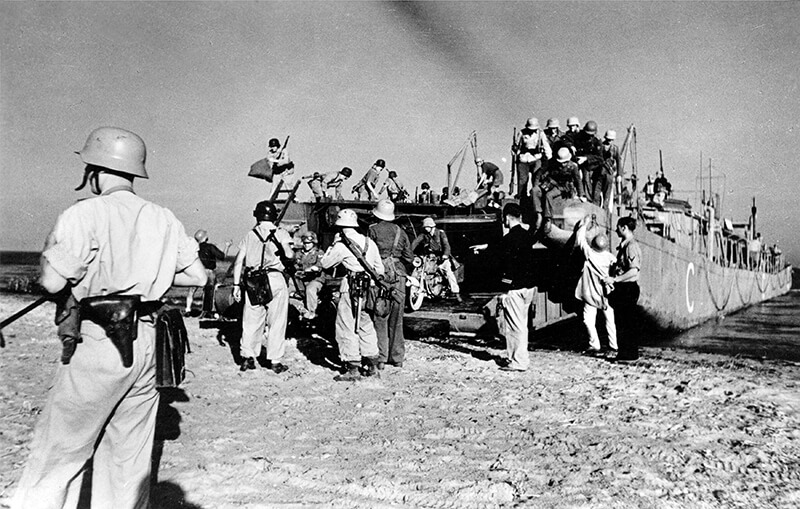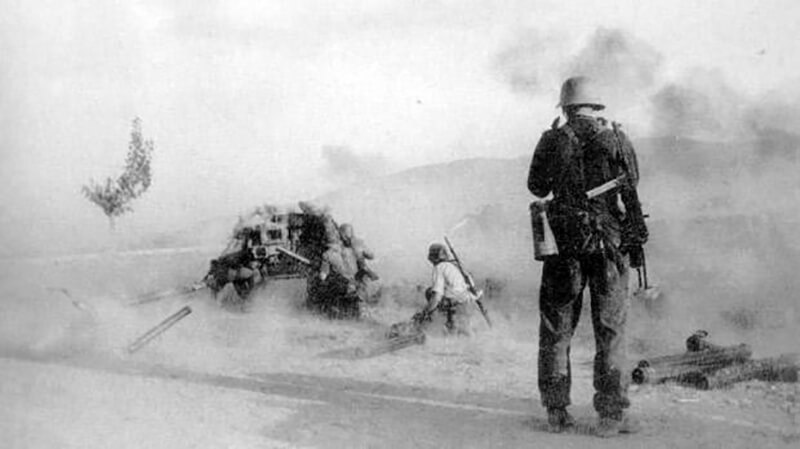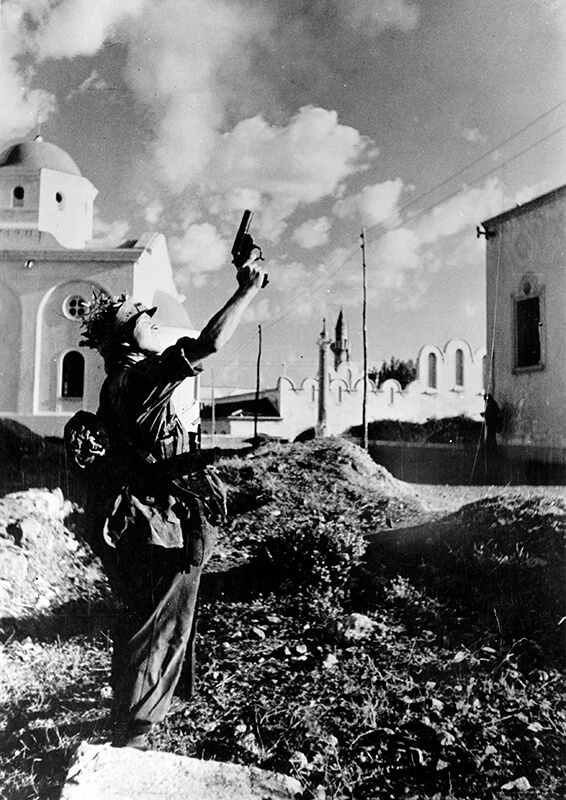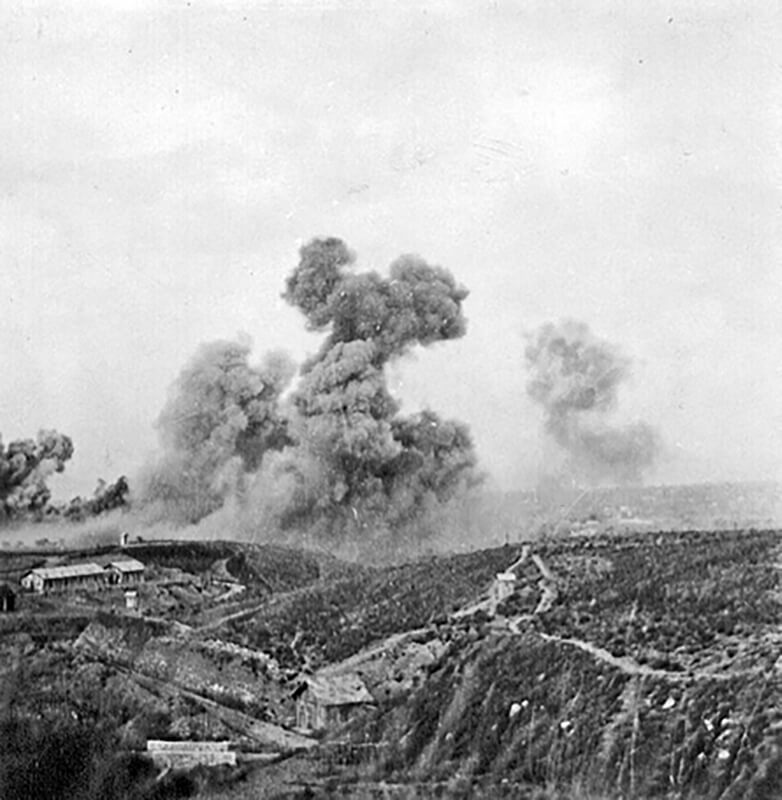| Page Created |
| July 17th, 2024 |
| Last Updated |
| July 25th, 2024 |
| Germany |
 |
| Great Britain |
 |
| Italy |
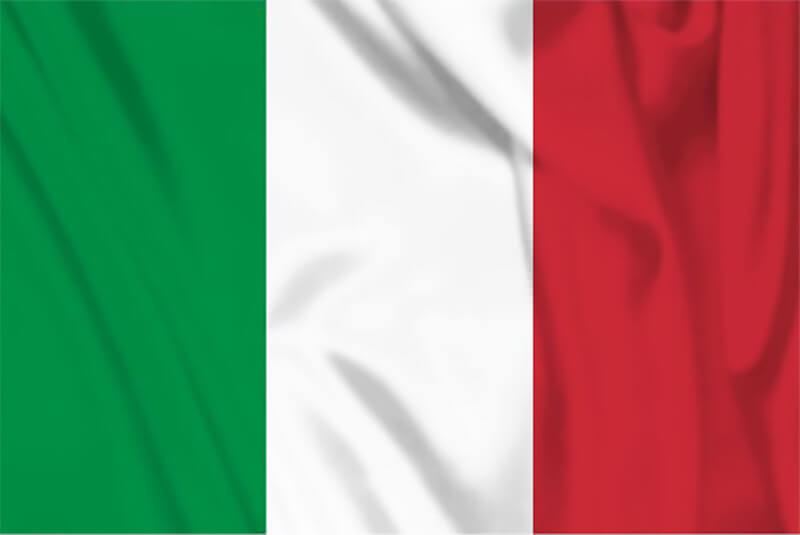 |
| Special Forces |
| Brandenburgers Special Boat Squadron The Parachute Regiment |
| September 24th, 1943 – October 4th, 1943 |
| Unternehmen Eisbär |
| Objectives |
- German
- Invade and occupy the Island of Kos
- Allied
- Defend the Island of Kos against a German invasion
| Operational Area |
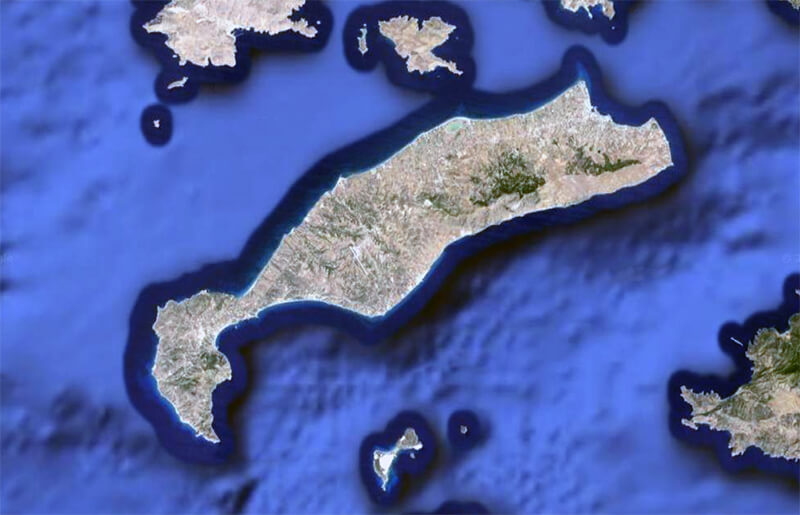
Kos, Aegean Sea, Greece
| Allied |
- Italy
- 10th Regiment Regina Division
- Artillery
- Great Britain
- Sn Detachment, Special Boat Squadron
- 11th Parachute Battalion, The Parachute Regiment
- 1st Battalion Durham Light Infantry
- 2901 Squadron, Royal Air Force Regiment
- 2909 Squadron, Royal Air Force Regiment with 33 Hispanos anti-aircraft guns
- 1st Light Anti-Aircraft Regiment with 18 Bofors guns
- No. 7 Squadron, South African Air Force
- No. 74 Squadron, Royal Air Force
| Axis |
- Generalleutnant Müller
- III. Bataillon, Grenadier-Regiment 440, Rhodos
- II. Battalion, Grenadier-Regiment 16, 22. Infantrie Division
- II. Battalion, Grenadier-Regiment 65, 22. Infantrie Division
- 1. Küstenjägerabteilung Brandenburg Division
- 15. Fallschirmjäger Abteilung, 4. Brandenburg Regiment
- I. and II. Gruppe Schlachtgeschwader 3 Gruppe Junker 87 D3 (close air support)
- II. Gruppe of Kampfgeschwader 51 Junker 88 (air strikes)
| Operation |
Kos lies only six kilometres from the Turkish coast, ninety-six kilometres northwest of Rhodes, and forty-eight kilometres south of Leros. The island, stretching forty-five kilometres long and ten kilometres wide, boasts 112 kilometres of coastline and spans an area of 290 square kilometres. The town of Kos, on the northeast coast, serves as the only port, while the only airfield is located in Antimachia, twenty-nine kilometers away. A rugged ridge runs the full length of the southern part of the island, and the sandy beaches on the northern side provide ideal landing sites.
| September 11th, 1943 |
After securing Rhodes, the Germans set their sights on Kos.
| September 12th, 1943 |
At Castelrosso, Brigadier Douglas John Tulloch Turnbull, commander of Raiding Forces Middle East receives additional shipping. At dawn, a collection of Italian craft arrives from Rhodes, prompting a rapid deployment of S patrols of the Special Boat Squadron along the quays due to concerns over a potential German “Trojan Horse” deception. This addition to the Castelrosso fleet includes several small trawlers, two more MAS boats, and some large Greek caiques. Despite the expanded fleet, the force remains limited for tackling a complex, geographically dispersed problem. Nevertheless, that evening, Motor Launch 249 carrying Sutherland and the patrols of S Detachment of the Special Boat Squadron, along with an Italian MAS boat carrying Lord Jellicoe, an interpreter, and the invaluable Kesterton, sets off on the first stage.
| September 13th, 1943 |
Uncertain of their reception and unaware if the Germans have forestalled them or what the sentiments of the Italian garrison might be, Motor Launch 249 with S Detachment of the Special Boat Squadron approaches the harbour. An inevitable crowd of children begins to collect, and as they enter the narrow harbour entrance, they see the crowd gathering to meet us on the quay. The inhabitants’ spontaneous enthusiasm and joy are touching.
Grapes are showered upon the patrols as they go ashore, and even some champagne is produced by the Greeks. The Italian response to the British arrival is more dubious, likely influenced by rumours of recent events on Rhodes. However, the garrison commander and his staff are cooperative, and by noon most of the Special Boat Squadron men occupy billets around Antimachia airfield in the centre of the island, while the officers sit down to lunch in the mess. Milner-Barry and Macbeth elicit from the commanding officer of an Italian infantry battalion the defence plan for the area. They come to the conclusion that there is no plan.
Back in the town of Kos, free haircuts and shaves are offered, and Second-Lieutenant Stefan Casulli, a slight and extraordinary Alexandrian who joined the British Army and volunteered for special service, is borne shoulder-high to the square and entreated to make a speech.
Meanwhile, Jellicoe and his small party have already left to discover the attitude and intentions of the Governor of the island of Leros, Admiral Mascherpa. If amicable, they are to investigate the island’s defences and find a suitable area for dropping supplies and reinforcements.
during that same time, Sutherland and Milner-Barry intensify efforts to bolster the Allied presence in the eastern Aegean.
| September 14th, 1943 |
During the afternoon, a Dakota aircraft arrives, escorted by two Beaufighters and a flight of Spitfires from No. 7 Squadron, South African Air Force. Just before midnight, a company of 120 paratroopers from the 11th Parachute Battalion is dropped by Dakotas of No. 216 Squadron, Royal Air Force onto the salt pans along the northern coast near Marmari, guided by a team led by Stewart Macbeth.
In recognition of the increasingly mixed force operating in the Aegean, which now includes significant naval involvement, official channels designate it as Force 292. Cairo announces that a general has been appointed to command this force and will soon arrive on Kos. With this new command structure in place, it is time for irregular groups to move on.
| September 15th, 1943 |
Two Spitfires from No. 7 Squadron, South African Air Force, maintain a standing patrol over Kos, providing crucial cover for transport aircraft and ships bringing in supplies and reinforcements. Among the new arrivals are the first troops of No. 2909 Squadron, Royal Air Force Regiment with nine Hispano-Suiza HS.404 guns for anti-aircraft defence.
| September 17th, 1943 |
The German counterattack begins with a heavy air bombardment. The Messerschmitt Bf 109’s and Junkers Ju 88’s encounter initial resistance from Royal Air Force gunners on the ground and the two South African Spitfires in the air, achieving varying levels of success. However, the use of “Butterfly Bombs” temporarily renders Antimachia airfield unserviceable and damages the Douglas C-47 Skytrains. Despite this, the first detachments of the Durham Light Infantry are successfully landed. One Dakota crashes into the sea, and while its occupants are rescued, they are subsequently interned in Turkey.
A second detachment of the No. 2909 Squadron, Royal Air Force Regiment, arrives, bringing the squadron to full strength, making it one of the first Royal Air Force Regiment Squadrons to be transported to the battlefield by air with all its weapons.
| September 24th, 1943 |
The green light for the assault on Kos, code-named “Unternehmen Eisbär,” is given after Hitler meets with General Maximillian Weichs, Commander in Chief Southeast. The Naval Commander of Attica undertakes the detailed naval planning for the embarkation of troops and the assembly of adequate ships. The plan calls for a main landing on the flat north coastline near Marmari, west of Kos and close to the Salty Flats airstrip. A second landing is to be made at the southwestern corner of the island, at Kamara Bay, while a subsidiary landing is planned for the Cape Foca area to the east of Kos.
For the operation, the 22. Infantrie Division under Generalleutnant Müller is reinforced by two companies from the special Brandenburg Division: 1. Küstenjägerabteilung Brandenburg Division, a unit similar to the British Special Boat Squadron, and the 15. Fallschirmjäger Abteilung, 4. Brandenburg Regiment. The army units selected for the operation form Battle Group Müller, named after their commander, Generalleutnant Müller. The II. Battalion, Grenadier-Regiment 65, 22. Infantrie Division and later the III. Battalion, 440. Grenadier-Regiment (III/440) are to land at Marmari. The II. Battalion, Grenadier-Regiment 16, 22. Infantrie Division (II/16) is allocated to the southeast coast near Cape Foca. The company from the Küstenjägerabteilung is to land at Kamara Bay.
The Italian garrison on Kos consists of about 3,500 men from the 10th Regiment of the Italian Regina Division and artillery units. These men are ill-equipped, and their morale has suffered since the armistice. The British garrison arrives on Kos between September 16 and 23, including the 1st Battalion Durham Light Infantry, the 2901 and 2909 Squadrons of the Royal Air Force Regiment with 33 Hispanos anti-aircraft guns, and the 1st Light Anti-Aircraft Regiment with 18 Bofors guns. Additionally, two Spitfire Squadrons, No. 7 Squadron of the South African Air Force, and No. 74 Squadron of the Royal Air Force fly into Kos. Force Commander Colonel L. R. F. Kenyon believes that to successfully defend Kos, he needs an infantry brigade, an artillery regiment, a field engineers company, a squadron of tanks, and anti-aircraft units. The 1 DLI is disposed of in three groups: A and B companies in Kos town, C Company on the outskirts south of the town, and D Company with the Royal Air Force Regiment gunners at the Antimachia airfield. The total force numbers around 1,600 British troops. This includes 1,115 combatants, including 880 army personnel and 235 from the Royal Air Force Regiment.
The Long Range Desert Group arrives on the island of Kalymnos, twelve kilometres south of Kos. This island is employed as a base for outlying island watches.
| September 26th, 1943 |
Eight Ju-88’s of Lehrgeschwader 1 sink the destroyers H.M.S. Intrepid (British) and R.H.N. Vasilissa Olga (Greek) at Portolago in Leros.
No. 7 Squadron, South African Air Force, is down to just four serviceable aircraft. To reinforce the dwindling air defences, No. 74 Squadron, Royal Air Force, is flown onto Kos the same day. Meanwhile, No. 2909 Squadron endures relentless daily attacks, managing to shoot down enemy aircraft but suffering increasing casualties.
| September 27th, 1943 |
A group from the Long Range Desert Group are sent out on a caique from Kalymnos to assist in the rescue of a Spitfire pilot from No. 7 Squadron, South African Air Force who had parachuted into the sea. Simultaneously, another caique sails with a Special Boat Service doctor to recover a Luftwaffe pilot who went down at a different location. This vessel, unarmed, is intercepted by two Arado Ar 196 seaplanes, one of which lands alongside and, at gunpoint, retrieves their pilot. The Arado crews, showing compassion, lallow the Special Boat Squadron medical officer, the vessel, and its crew to return safely.
| September 28th, 1943 |
Captain R.A. (Ron) Tinker, leading a composite patrol (X1) of twelve men of the Long Range Desert Group, lands on the small island of Pserimos, situated midway between Kalymnos and Kos. Their mission is to investigate mysterious signals being sent to Turkey from the island, which they discover are from a Greek agent working for the British.
| September 29th, 1943 |
The airfield and the strips are attacked again by the German Luftwaffe, resulting in eight pilots from the squadrons being killed and 12 aircraft destroyed. Antimachia airfield becomes inoperable, with aircraft being destroyed both on the ground and in the air The Spitfire opposition on Kos collapses.
| October 1st ,1943 |
The German invasion force embarks from Piraeus, Suda, and Heraklion in five transports, nine ferries, and three engineer assault boats escorted by two minelayers, five motorboats, and four caiques. The Germans sail in the dark, unaware of the garrison’s strength. The convoy is first sighted by British aerial reconnaissance that same day near Naxos, where the battle group rendezvous.
Due to the German Air Force’s air superiority, it is not possible for ships to engage the force during daylight hours. A destroyer squadron of three ships is dispatched from Alexandria to intercept the force. However, the destroyers cannot locate the convoy during the subsequent two nights because they believe the convoy’s destination is Rhodes. As a result, they withdraw to Alexandria to refuel. General Wilson later explains that they did not believe the Germans had sufficient time to gather an amphibious force. Additionally, the two battleships at Alexandria are ordered to sail home, leaving no other ships available. To make matters worse, the two submarines sent to patrol the coasts of Kos arrive after the Germans have landed.
Urgent supplies are landed on Kos by five Dakotas.
| October 3rd, 1943 |
Just before dawn, the German invasion fleet bound for Kos unexpectedly arrives at Pserimos. They disembark about eighty troops to establish a headquarters and dressing station. Captain Tinker’s patrol of the Long Range Desert Group, caught off guard, quickly seeks cover on the high ground but comes under fire from the escort ships. Enemy patrols sweep the island throughout the day and the following one, resulting in the capture of Driver A.J. (Jack) Lawrence of M Patrol.
At 05:00 hours, the invasion of Kos begins by sea, with the first wave landing at Marmari on the north coast. Simultaneously, additional landings take place along the rugged south coast. Approximately 1,200 men are put ashore during the first wave, supported by light artillery and armoured cars. The German Air Force provides close air support, continuously bombing the British forces.
Around 06:30, Brandenburg parachutists of the 15. Fallschirmjäger Abteilung, 4. Brandenburg Regiment drop near Antimachia airfield, also supported by Stuka dive-bombers. The combined forces push relentlessly towards their objectives, overrunning each defensive position in turn.
The II. Battalion, Grenadier-Regiment 65, 22. Infantrie Division pushes towards the nearby Salty Flats airstrip, damaging the ten Spitfires hidden there. Soon, the Germans cut through the Kos-Antimachia road, disrupting communication between Force Headquarters and the airfield. The A and B companies of the 1st Battalion Durham Light Infantry concentrate eight kilometres west of Kos. The deputy commander orders the companies to take positions astride the road to prevent the Germans from entering the town.
D Company, defending the airfield alongside the Royal Air Force Regiment gunners, faces heavy attacks. Despite the intense bombing, they hold up well. However, by the afternoon, German troops marching from Kamara Bay join those attacking the airfield. By 17:00, all anti-aircraft guns are disabled, and the troops, out of touch with the rest of the island, are ordered to withdraw to the south coast.
The Germans succeed in driving a wedge between A and B Companies, causing A Company to lose contact with the rest of the battalion. By 19:00, there is a general withdrawal of troops to Kos, except for A Company, which is decimated, and its remnants join the battalion later. In Kos, the survivors of the three companies establish a defensive perimeter. At 20:00, Colonel Kenyon decides that resistance is futile, as no reinforcements are expected to arrive that night. He plans to take the survivors into the neighbouring hills under the cover of a rearguard and continue the fight as guerrillas. The survivors split into teams of about twelve men and move during the night towards the rendezvous village of Cardamena.
Around midday, Colonel D.J.T. Turnbull commanding officer of Raiding Forces Middle Easr sends a warning order indicating that the Long Range Desert Group on Kalymnos must be ready to embark by local caique to counterattack on Kos. The unit is split into platoons, with each patrol augmented by the Lost of Base personnel from the “out” Patrols M1, T1, M2, and S1. A small headquarters is formed with wireless communication to A and B Squadron Headquarters and a rear link to Leros. Captain Cecil Howard Bruce “Dick” Croucher prepares caiques by hiring local vessels and utilizing three Royal Navy caiques.
At dusk, Colonel Turnbull arrives with Major Jellicoe and orders the Long Range Desert Group to leave for Kos that night. After the Navy calculates the route and distances, they determine that the caique flotilla is too slow to complete the journey under the cover of darkness. Consequently, it is decided that only B Squadron will go by Motor Launch. However, since the Motor Launch does not arrive in time, this plan is also abandoned.
| October 4th, 1943 |
The rearguard, a platoon with some mortars, lasts until 02:00. The situation is chaotic, and ultimately, it becomes every man for himself. The plan to fight from the hills fails because Cardamena is already in German hands, even for those who manage to reach it. For many days after the battle, German patrols search for the British in the hills.
Around midday, the Long Range Desert Group on Kalymnos receives a signal indicating that Kos has fallen, followed by an order to move all British troops and stores to Leros that night. This necessitates a significant rearrangement, as the unit is initially prepared to move to Kos with minimal equipment. By dusk, however, all stores are packed onto a Royal Navy schooner, and the Long Range Desert Group and Special Boat Squadron are ready to embark in seven caiques. A somber farewell is taken by the Italian Garrison and Greeks, both presumably feeling let down by the British.
A single party, comprising of Captain Dick Croucher and the political officer is left behind to settle outstanding accounts for services and accommodation. When the time comes to leave, they find that the Italian Port Commander, who had been cooperative until then, has turned pro-German and forbids the use of the caique Captain Croucher had arranged to go to Leros, enforcing his order with a couple of well-placed machine guns. Anticipating this, Captain Croucher had arranged for another caique in a bay on the other side of the island. They embark on a hair-raising journey in a car that suffers a puncture and, without a spare wheel, they stuff the tire with grass to keep going and reach the caique to leave the island for Leros.
| Aftermath |
A total of 1,388 British and 3,145 Italians are captured and gathered at Neratzia Castle in the city of Kos, only about one hundred are rescued by a Special Boat Squadron detachment. The rest are either killed or captured. The Germans suffer eighty-five casualties and lose two landing craft.
Between October 4th, 1943 and October 6th, 1943, 148 Italian officers from the 10th Regiment, 50th Infantry Division Regina, commanded by Colonel Felice Leggio, face a summary trial ordered by Generalleutnant Müller. The trial determines that all officers loyal to King Vittorio Emanuele III, who resisted the Germans, are to be executed. Among the 148 officers, seven defect to the Germans, 28 escape to Turkey, 10 are hospitalised and later transferred to camps in Germany, and the remaining 103 are executed by Generalleutnant Müller’s men between the evenings of October 4th, 1943 and October 7th, 1943 near the Tigaki salt lake. The Italian Port Commander on Kalymnos is one of the officers being executed by the Germans.
| Multimedia |

